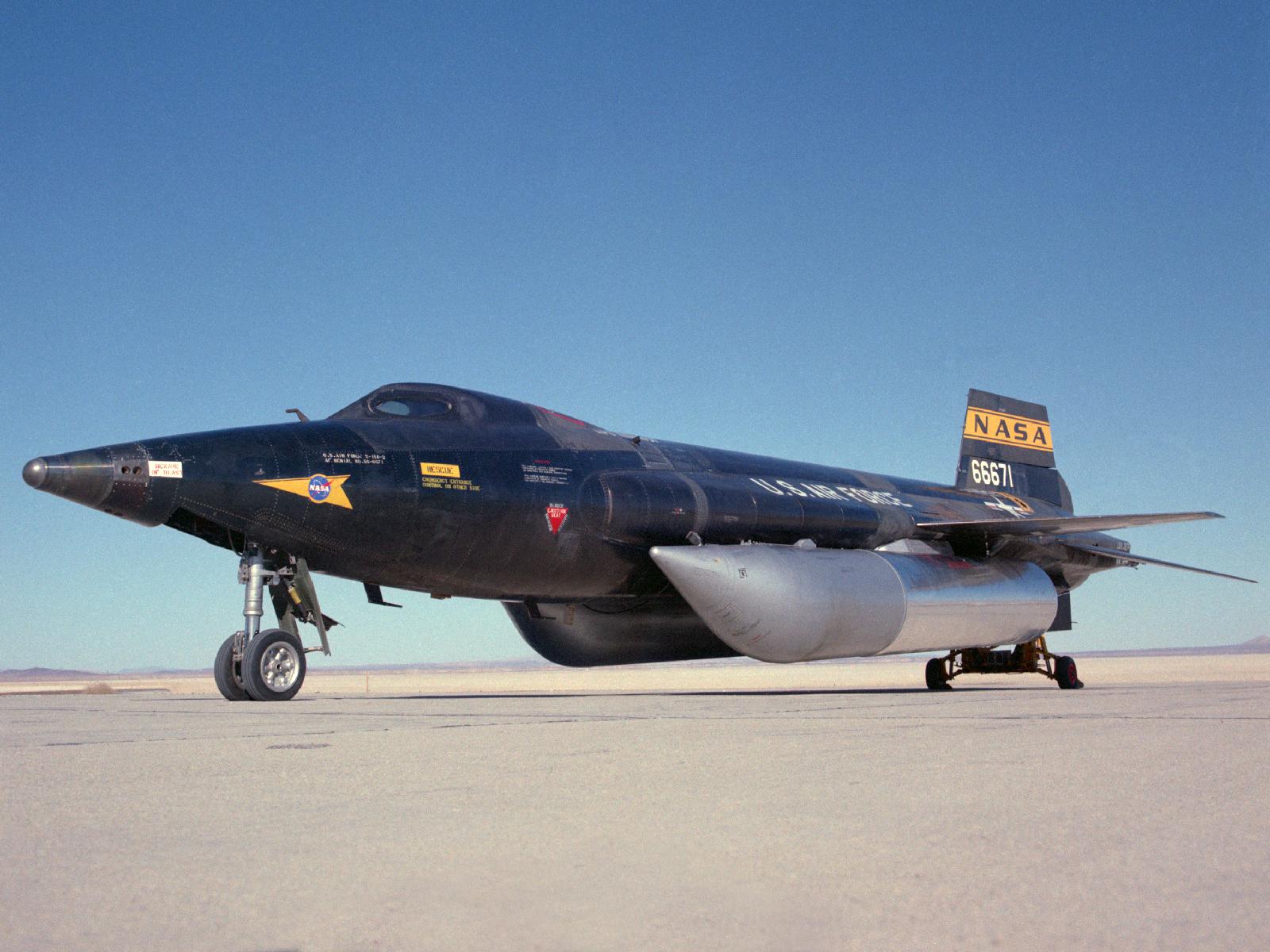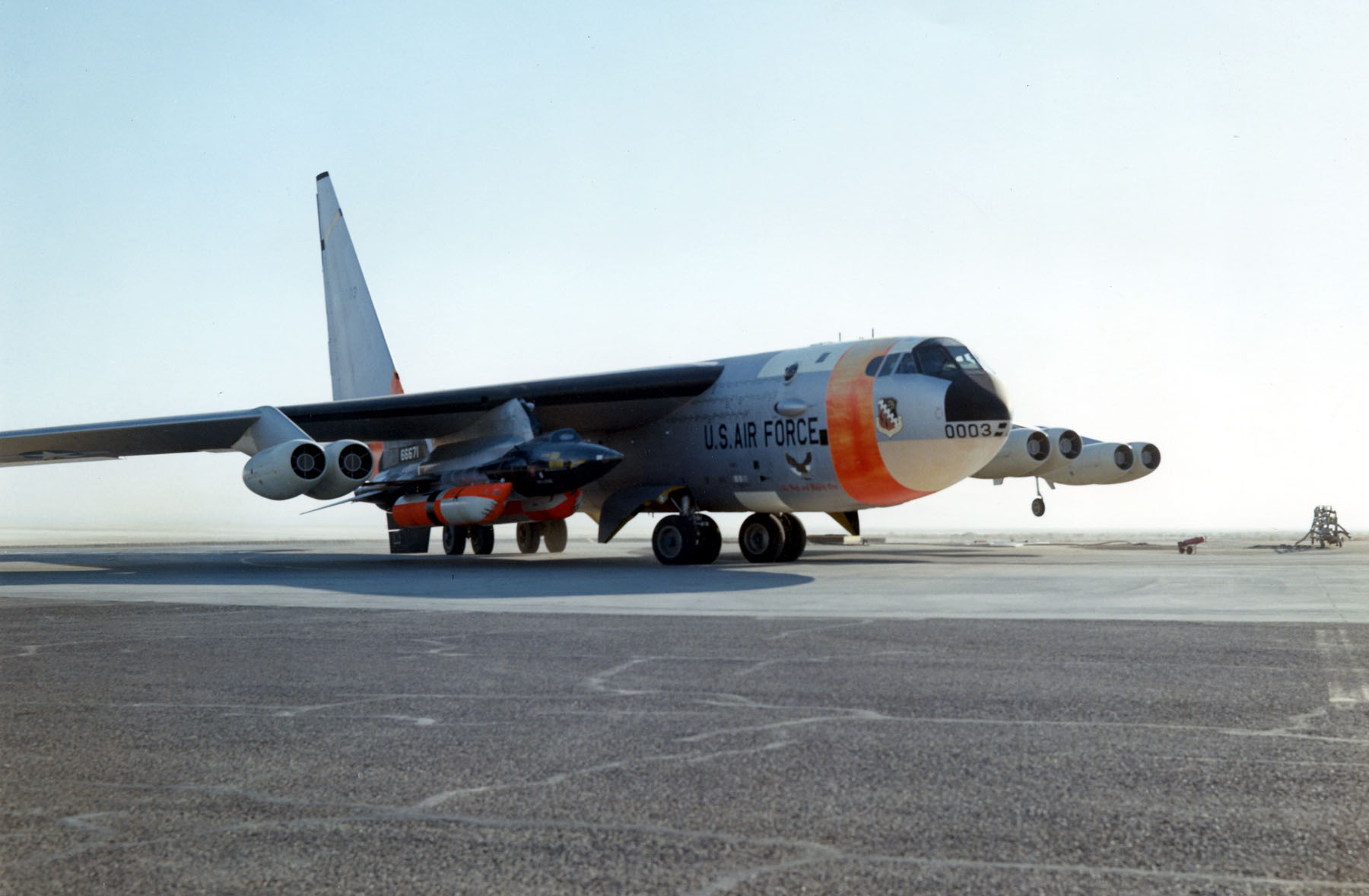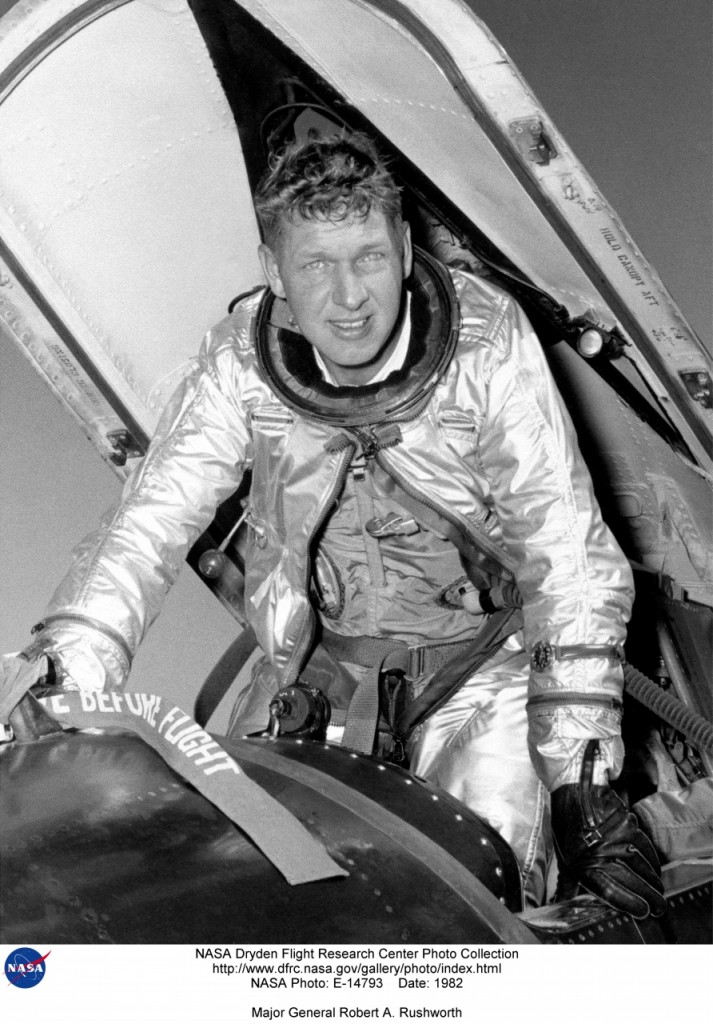
3 November 1965: Major Robert A. Rushworth made the first flight of the modified X-15A-2 rocketplane, Air Force serial number 56-6671. After a landing accident which caused significant damage to the Number 2 X-15, it was rebuilt by North American Aviation. A 28-inch (0.71 meter) “plug” was installed in the fuselage forward of the wings to create space for a liquid hydrogen fuel tank which would be used for an experimental “scramjet” engine that would be mounted on the the ventral fin. The modified aircraft was also able to carry two external fuel tanks. It was hoped that additional propellant would allow the X-15A-2 to reach much higher speeds.
The first flight with the new configuration was an “envelope expansion” flight, intended to test the handling characteristics of the X-15A-2, and to jettison the tanks (which were empty on this flight) to evaluate the separation and trajectory as they fell away from the rocketplane in supersonic flight.

The X-15A-2 was dropped from the Boeing NB-52A Stratofortress 52-003, over Cuddeback Lake, 37 miles (60 kilometers) northeast of Edwards Air Force Base in the Mojave Desert of southern California. This was the only time during the 199-flight X-15 Program that this lake was used as a launch point.
The X-15 was released at 09:09:10.7 a.m., PST. Bob Rushworth ignited the Reaction Motors XLR99-RM-1 rocket engine and it ran for 84.1 seconds before its fuel supply was exhausted. This engine was rated at 57,000 pounds of thrust (253.549 kilonewtons).
The X-15 climbed to 70,600 feet (21,519 meters) and reached Mach 2.31 (1,514 miles per hour/2,437 kilometers per hour.)
The test flight went well. The external tanks jettisoned cleanly and fell away. The recovery parachute for the liquid oxygen tank did not deploy, however, and the tank was damaged beyond repair.
Rushworth and the X-15A-2 touched down on Rogers Dry Lake after a flight of 5 minutes, 1.6 seconds.
© 2016, Bryan R. Swopes